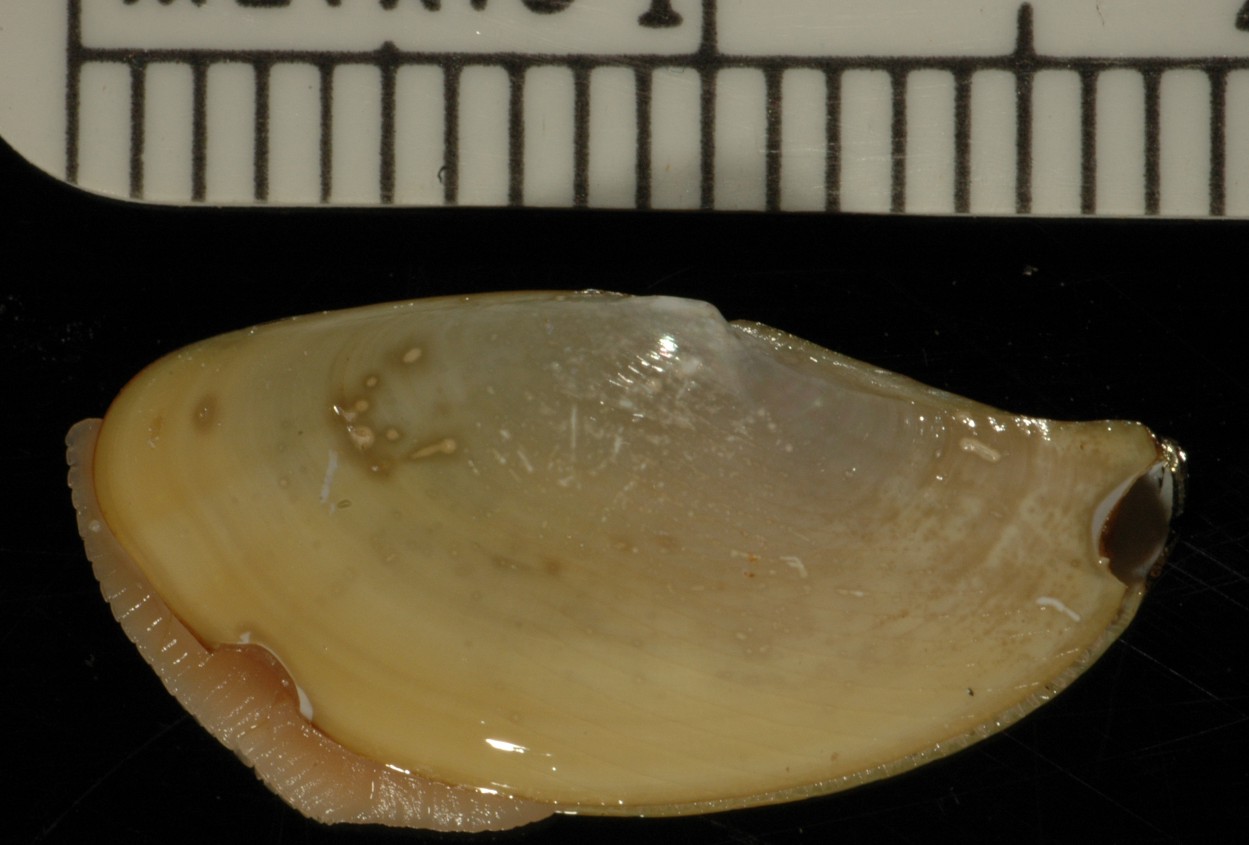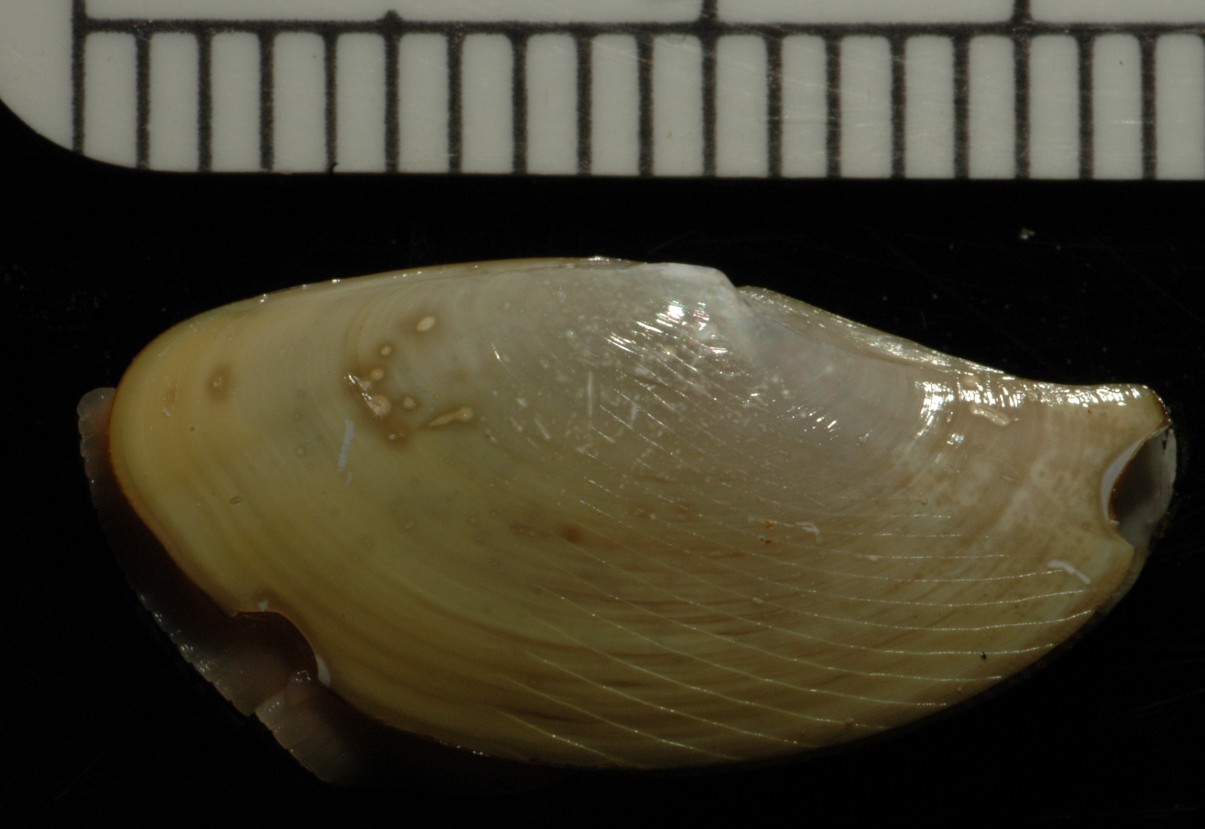Yoldia seminuda (Dall, 1897)Common name(s): Crisscross Yoldia |
|
| Synonyms: Cnesterium scissurata, Yoldia scissurata |  |
| Phylum Mollusca
Class Bivalvia Subclass Protobranchia Order Nuculida (Palaeotaxodonta) |
|
| Yoldia seminuda trawled from 15-18 m
depth off Canoe Island,
San Juan Island, WA.
Captured July 1987 and preserved before photographing. The foot can be seen extending from the anterior end of the shell. |
|
| (Photo by: Dave Cowles Sept 2006) | |
How to Distinguish from Similar Species: Other Yoldia species do not have the concentric lines on the shell which cross the growth lines. Macoma yoldiformis is a Macoma clam which also is white with a smooth, shiny periostracum but, among many other differences, does not have taxodont dentition.
Geographical Range: Arctic ocean to San Diego, CA
Depth Range: Subtidal, 15-150 m.
Habitat: In fine sand and mud
Biology/Natural History: This group lives in the sediment and eats detritus which is picked up by extending the long palps into the sediment and moving detritus toward the mouth by ciliary action. Unlike other groups of clams, the gills are used for respiration only--not for feeding.
Yoldia is a protobranch bivalve, meaning its gills are bipectinate and it does not feed using its gills (see above). It is also a Palaeotaxodont because its shell valves are equal and have taxodont dentition.
| Return to: | |||
| Main Page | Alphabetic Index | Systematic Index | Glossary |
References:
Dichotomous Keys:Kozloff 1987, 1996
Scott and Blake, 1998
General References:
Harbo,
1997
Morris,
1966 (as Y. scissurata)
Scientific Articles:
Web sites:
General Notes and Observations: Locations, abundances, unusual behaviors:

Strong side light (here from above, from the dorsal side) shows the
fine concentric striations on the shell that cut across the concentric
growth lines. The growth lines are centered on the umbo,
while the
other striations are centered to the right (posterior to) the
umbo.
The foot can be seen protruding from the anterior end of the shell to
the
left.
Authors and Editors of Page:
Dave Cowles (2006): Created original page